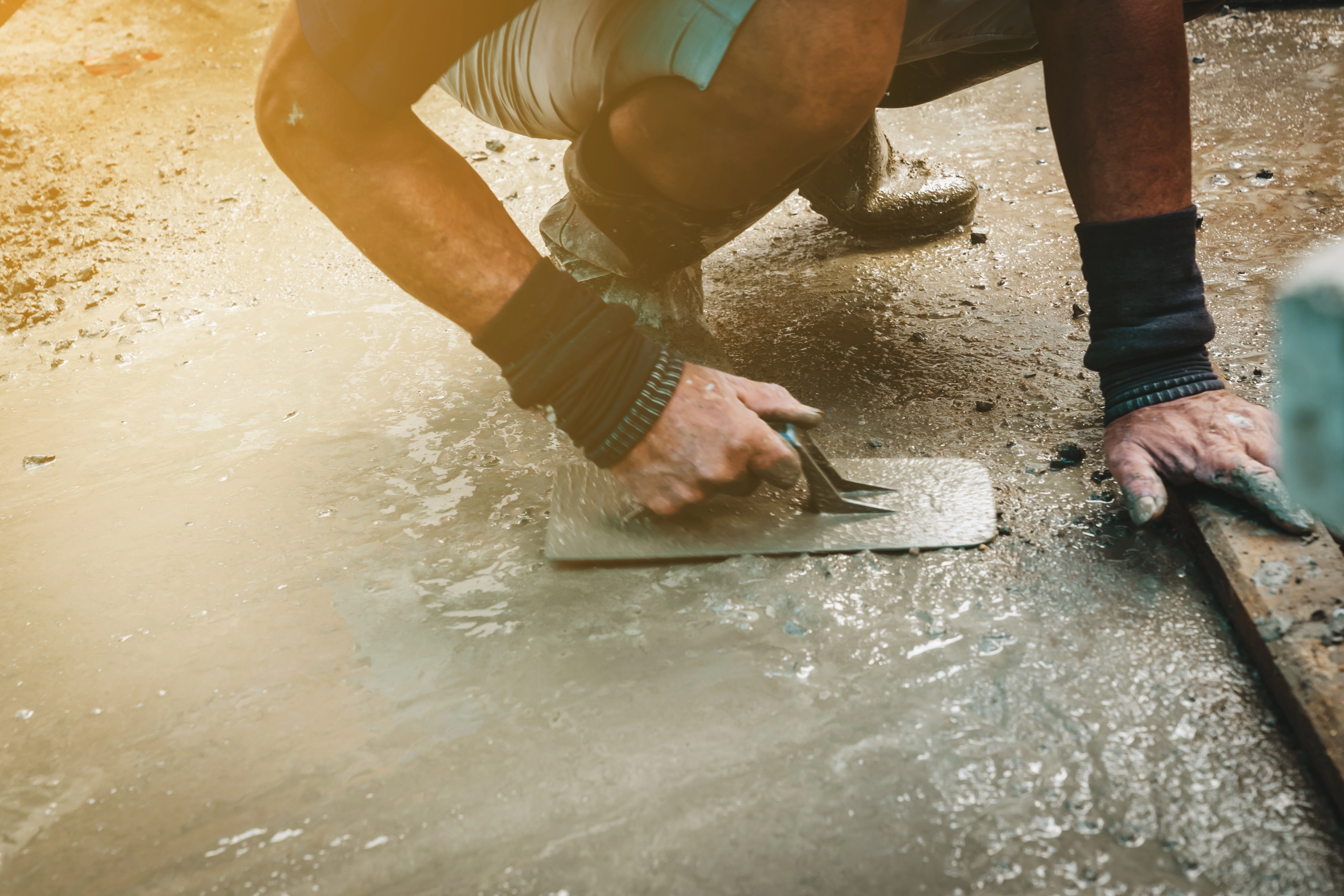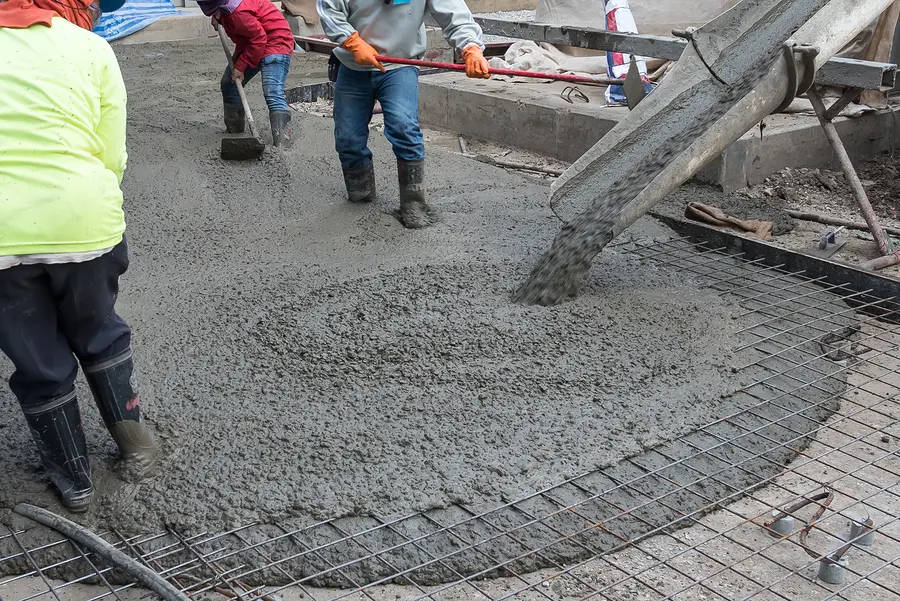The Ultimate Guide to Different Concrete Finishing Techniques and When to Use Them
Welcome to our beginner's guide to understanding concrete finishing. Whether embarking on a DIY project or simply curious about the process, this introduction will provide you with the basics in easy-to-understand terms.
Concrete finishing refers to the final steps to achieve a concrete surface's desired appearance, texture, and durability. It involves various techniques applied after the concrete has been poured and leveled, enhancing its aesthetics and functionality.
Proper concrete finishing enhances a surface's visual appeal and improves its performance and longevity. Adequate finishing techniques ensure a smooth, durable surface that withstands wear and tear, weather elements, and other environmental factors.
Fundamental Techniques in Concrete Finishing:
1. Smoothing: This involves using tools such as floats and trowels to level and smooth the surface of freshly poured concrete.
2. Texturing: Texturing techniques add visual interest and slip resistance to the concrete surface, preventing it from being too slippery when wet.
3. Sealing: Applying a sealant helps protect the concrete from moisture penetration, stains, and abrasion, prolonging its lifespan.
Benefits of Understanding Concrete Finishing
- Achieve professional-looking results for DIY projects.
- Ensure the durability and longevity of concrete surfaces.
- Enhance safety by providing slip-resistant finishes.
- Increase property value with attractive and well-maintained concrete surfaces.

Essential Tools and Safety Precautions for Beginners
Welcome to our guide on essential tools and safety measures for beginners. Whether you're tackling DIY projects around the house or learning a new skill, understanding the right tools and safety practices is crucial for a successful and safe experience.
Essential Tools Every Beginner Should Have:
1. Hammer: Used for driving nails and small demolition tasks.
2. Screwdriver Set: Essential for assembling furniture, tightening screws, and various household tasks.
3. Tape Measure: Necessary for taking accurate measurements for cutting materials or spacing objects.
4. Pliers: Versatile tools for gripping, bending, and cutting wires or small objects.
5. Adjustable Wrench: Ideal for tightening or loosening nuts and bolts of different sizes.
6. Utility Knife: Handy for cutting materials like cardboard, plastic, or drywall.
7. Safety Glasses: Protect your eyes from debris, dust, or flying particles during tasks like drilling, sanding, or cutting.
8. Work Gloves: Provide hand protection from sharp edges, splinters, or rough surfaces.
Safety Measures to Follow
1. Always wear appropriate safety gear, including safety glasses, gloves, and closed-toe shoes.
2. Familiarize yourself with the proper use of each tool before starting any project.
3. Keep your work area well-lit and organized to minimize accidents and injuries.
4. Use power tools cautiously, following the manufacturer's instructions and safety guidelines.
5. Never work under the influence of drugs or alcohol.
6. Keep tools and sharp objects out of reach of children and pets.
7. Store tools properly in designated areas to prevent accidents and maintain their condition.
Understanding and implementing these essential tools and safety measures can ensure a safer and more efficient experience when working on DIY projects or learning new skills. Remember to prioritize safety to enjoy your projects with peace of mind.
Exploring Concrete Finishing Techniques: From Broom to Stained
Concrete finishing techniques are vital in achieving the desired appearance and functionality of concrete surfaces. Let's explore seven popular techniques used in concrete finishing:
A. Broom Finish:
To add texture and traction, a broom finish is applied to freshly poured concrete. This treatment is frequently employed to avoid slippage on outdoor surfaces such as patios, driveways, and sidewalks.
B. Float Finish:
Float finishing is achieved using a float—a flat tool—to smooth and level the surface of freshly poured concrete. Its smooth and uniform finish suits interior floors and outdoor slabs.
C. Trowel Finish:
Trowel finishing involves using a trowel—a flat, metal tool—to smooth and compact the concrete surface further. It creates a dense, polished appearance ideal for high-traffic areas like garage and warehouse floors.
D. Exposed Aggregate Finish:
Exposed aggregate finishing reveals aggregates' natural texture and color (such as stones or pebbles) within the concrete mix. After pouring, the surface is washed or brushed to expose the aggregates, resulting in a decorative and slip-resistant finish for pathways, pool decks, and decorative concrete projects.
E. Stamped Concrete Finish: Stamped concrete is created by imprinting designs onto the surface of freshly poured concrete to resemble other materials like brick, stone, or tile. This approach provides various design options for patios, driveways, and outdoor living areas.
F. Polished Concrete Finish:
Polished concrete is produced by grinding and polishing the surface to a glossy, reflective quality. Because of its longevity and low care requirements, polished concrete is popular for industrial flooring, retail establishments, and modern interiors.
G. Stained Concrete Finish:
Stained concrete involves applying acid- or water-based stains to the surface of cured concrete to add color and depth. This technique offers versatility and customization options for interior floors, countertops, and decorative elements.
Each concrete finishing technique offers unique benefits and aesthetic appeal, allowing you to customize your concrete surfaces to suit your style and needs. Experiment with different strategies to discover the perfect finish for your next project.
Choosing the Right Concrete Finishing Technique
Choosing the proper concrete finishing method is crucial to getting the outcomes you want for your project. The selection of a technique is influenced by various aspects, which guarantee functional effectiveness and visual attractiveness. Let's explore these factors:
1. P object Type and Location:
Consider the type of project and its location. Outdoor surfaces like driveways and sidewalks may require finishes that provide durability and slip resistance, such as a broom or exposed aggregate finishes. Interior floors, on the other hand, may benefit from polished or stained concrete finishes for a sleek and modern look.
2. Desired Appearance:
Consider the finish you want your concrete surface to have. Are you going for a more textured and ornamental effect, or are you more interested in a uniformly smooth finish? The finish you select should fit your space's overall design scheme and your taste in style.
3. Maintenance Requirements: Assess the upkeep requirements for the completed surface. Specific methods, like polished concrete, are suitable for high-traffic areas since they require less upkeep and are simple to clean. Some, like stamped concrete, must be periodically resealed for longevity and look.
4. Budget Constraints:
Consider your budget when selecting a concrete finishing technique. Some techniques, like broom or float finishes, are more cost-effective than stamped or stained concrete finishes, which involve additional materials and labor.
5. Climate and Environmental Factors: Consider the project location's climate and environmental circumstances. Specific finishes suit regions with high humidity levels or harsh temperatures. Additionally, factors like exposure to sunlight, moisture, and chemicals, which can impact the durability and longevity of the finish, should be considered.
By carefully weighing these variables, you can select the best concrete finishing method to satisfy project specifications and get the intended outcomes. Experimenting with different techniques allows you to create unique and visually appealing concrete surfaces tailored to your specific needs and preferences.
Concrete Finishing Maintenance Made Simple: Tips for Longevity
To keep your concrete finishes looking good and functioning properly over time, you must maintain and take care of them. The following simple advice can help you retain the best-looking concrete surfaces:
1. Regular Cleaning:
To remove stains, dirt, and debris, frequently sweep or rinse your concrete surfaces. For difficult stains, gently scrub the damaged areas with a scrub brush and a moderate detergent or concrete cleaner.
2. Sealing: To shield your surfaces from stains, abrasion, and moisture intrusion, think about using a concrete sealer. Depending on the type of finish and location of the concrete, reapply the sealer every 1-3 years for optimal protection.
3. Preve native Maintenance:
Address any cracks or damage to your concrete surfaces promptly to prevent further deterioration. Fill cracks with a concrete patching compound and smooth them with a trowel for a seamless repair.
4. Avoid Harsh Chemicals:
Avoid using harsh chemicals, such as deicers containing ammonium, nitrate, or sulfate, as they can damage the surface of your concrete finishes. Opt for safer alternatives like calcium chloride or sand for deicing purposes.
5. Guard Against Abrasion: Place furniture pads below heavy items to save your concrete floors from being scratched or scuffed. Consider using mats or rugs in high-traffic areas to minimize wear and tear.
6. Regul r Inspections:
Periodically inspect your concrete surfaces for wear, cracking, or discoloration. Please address any issues early to prevent them from worsening and requiring costly repairs.
7. Professional Maintenance:
For larger or more complex maintenance tasks, such as resealing or repairing damaged areas, consider hiring a professional concrete contractor with expertise in concrete fi fishing.
By following these maintenance tips and incorporating them into your routine, you can ensure that your concrete finishes remain in top condition for years. With the proper maintenance, your concrete surfaces will continue to enhance your area's aesthetic appeal and practicality.
Conclusion
In conclusion, understanding the basics of concrete finishing empowers you to transform ordinary concrete surfaces into beautiful and functional elements of your space. From choosing the proper technique to maintaining your finishes, each step plays a crucial role in achieving long-lasting results.
By exploring various concrete finishing techniques, such as broom, float, trowel, exposed aggregate, stamped, polished, and stained finishes, you can tailor your surfaces to suit your specific needs and design preferences.
When selecting the appropriate finishing technique, consider factors like project type, desired appearance, maintenance requirements, budget, and environmental conditions. Whether enhancing outdoor pathways, creating stunning interior floors, or adding decorative elements to your space, there's a concrete finishing technique to meet your unique requirements.
Once your concrete finishes are in place, regular maintenance is vital to preserving their beauty and functionality. Implementing simple cleaning routines, applying sealers as needed, and promptly addressing any damage will help prolong your finishes' lifespan and keep them looking their best for years.
Incorporate these tips into your concrete finishing projects to achieve professional-looking results and enjoy the benefits of durable, visually appealing surfaces. Whether you're a seasoned DIY enthusiast or embarking on your first concrete project, you can confidently tackle any concrete finishing endeavor with the proper knowledge and techniques.




